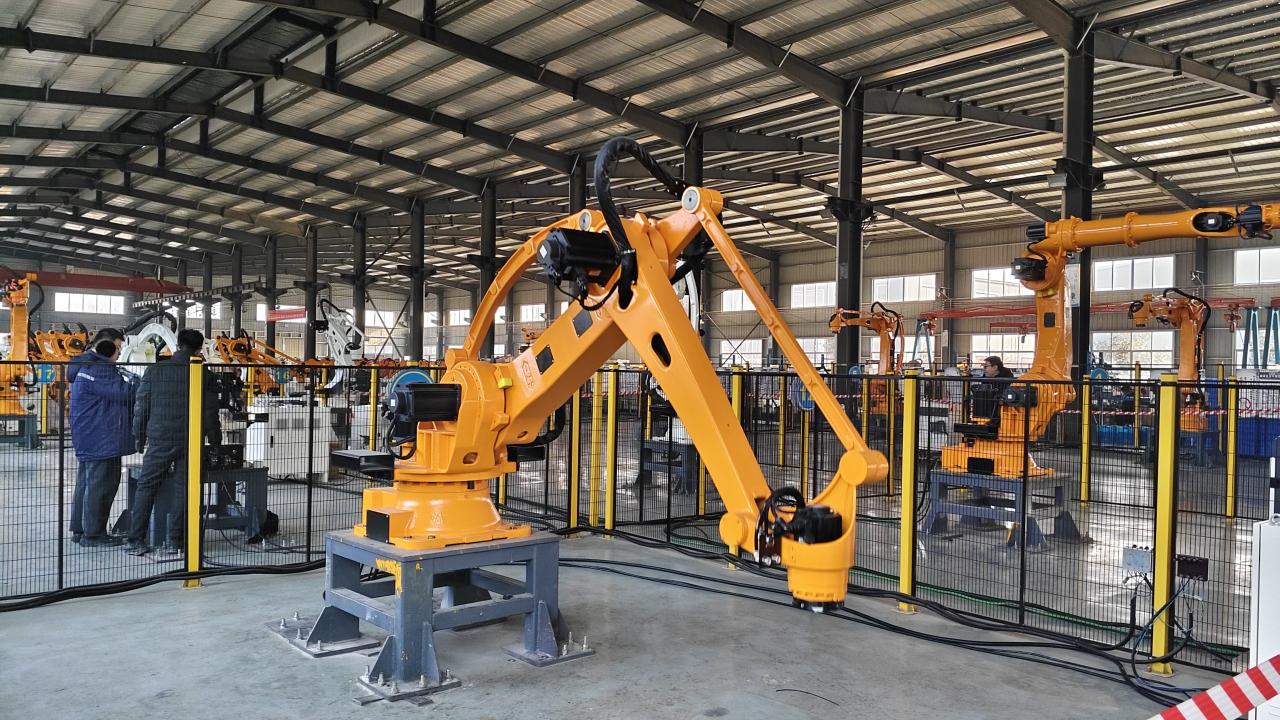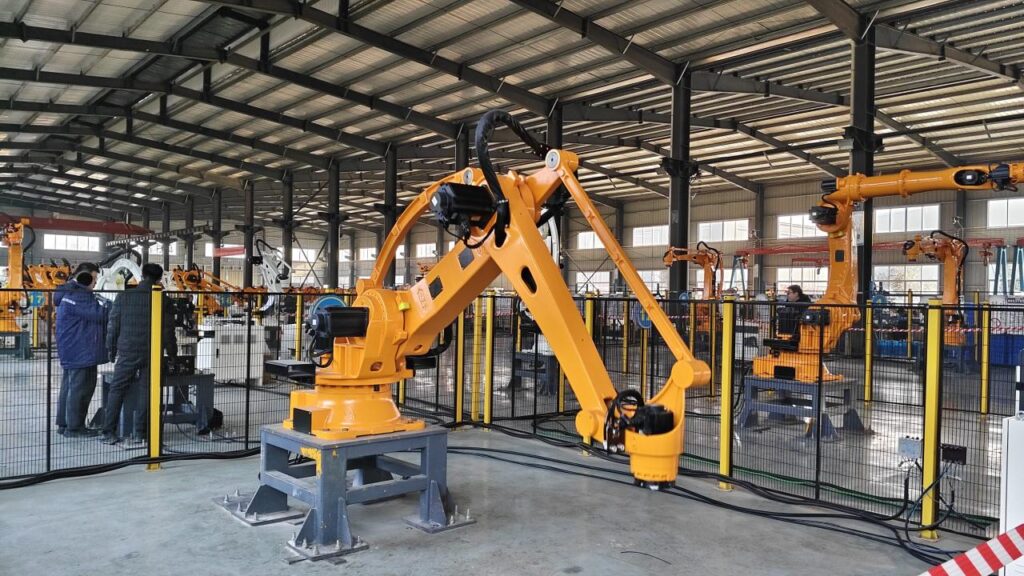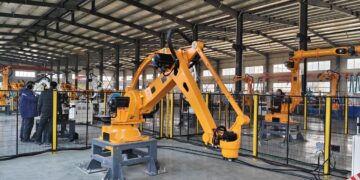The 21st century is marked by remarkable technological evolution, and among its most transformative forces is the rise of polyfunctional robots. These sophisticated machines—capable of performing multiple tasks across diverse industries—are no longer the futuristic promise of sci-fi; they are shaping how businesses operate today. From enhancing productivity and safety to improving cost-efficiency and innovation, multifunctional robots are bringing revolutionary change across healthcare, logistics, agriculture, construction, and beyond.
This article offers an in-depth look at how polyfunctional robots are disrupting traditional business models, enabling adaptive and intelligent automation, and driving the Fourth Industrial Revolution forward. Optimized for SEO and monetization through Google AdSense, this long-form guide is your ultimate reference for understanding the future of smart robotics.
What Are Polyfunctional Robots?
Polyfunctional robots are advanced machines designed to perform multiple tasks, often across varying contexts or environments. Unlike single-purpose industrial robots, which are tailored for repetitive, highly specific operations (like welding or painting), multifunctional robots are:
A. Adaptable – They can switch between tasks using modular attachments or software updates.
B. Autonomous – Equipped with AI and machine learning, they can make decisions based on real-time data.
C. Collaborative – Often referred to as “cobots,” these robots work safely alongside humans.
D. Cross-industry – Usable in different sectors with minimal customization.
Thanks to sensors, cameras, and AI integration, these robots are not only efficient but also intelligent—capable of interpreting environments, learning from experience, and responding dynamically to new challenges.
Key Components of Multifunctional Robotics
Polyfunctional robots are more than mechanical limbs; they are built upon complex technologies that enable versatility and autonomy.
A. Artificial Intelligence (AI)
AI enables decision-making, navigation, object recognition, and task optimization. With deep learning, robots improve over time.
B. Sensors and Vision Systems
Lidar, infrared, ultrasonic, and camera systems allow robots to perceive their surroundings and interact with precision.
C. Actuators and End Effectors
These are the mechanical components responsible for movement and task execution—whether gripping, lifting, or welding.
D. Modularity
Swappable tools or limbs allow a single robot to perform various functions—from vacuuming floors to lifting pallets.
E. Software Integration
Operating systems like ROS (Robot Operating System) enable seamless task programming and system interoperability.
F. Connectivity
Wi-Fi, 5G, and edge computing allow real-time data transmission between robots and cloud or central control systems.
Industrial Sectors Transformed by Polyfunctional Robots
The impact of polyfunctional robots is being felt across nearly every industry. Let’s explore some key sectors where transformation is already underway:
1. Manufacturing and Assembly
Robots in factories are no longer static, single-task machines. Today’s polyfunctional robots:
A. Assemble multiple components of a product on a single line.
B. Conduct quality inspections using machine vision.
C. Adapt to new product designs quickly without full reprogramming.
D. Operate alongside humans in “smart factories.”
This flexibility reduces downtime and accelerates time-to-market for new products.
2. Healthcare and Surgery
Robotics is revolutionizing patient care, especially in areas like surgery, elderly care, and rehabilitation.
A. Surgical robots offer higher precision and minimal invasiveness.
B. Service robots assist in delivering medication, disinfecting rooms, and guiding patients.
C. Rehabilitation robots support recovery exercises tailored to individual patient needs.
With AI integration, these robots also learn from patient outcomes to enhance future procedures.
3. Agriculture and Farming
The farming industry faces labor shortages, unpredictable weather, and the need for higher yields. Enter agri-bots.
A. Autonomous tractors and drones monitor crop health.
B. Robots plant seeds, irrigate fields, and harvest produce.
C. Machine learning helps optimize planting patterns and pest control.
D. Multifunctional bots switch between watering, pesticide spraying, and weeding.
Farmers gain productivity while conserving resources and reducing waste.
4. Logistics and Warehousing
Retail giants like Amazon and Alibaba rely heavily on robotic automation for supply chain efficiency.
A. Picking robots identify and handle items in inventory bins.
B. Autonomous mobile robots (AMRs) move goods across large warehouse spaces.
C. Robots sort packages by destination or product type.
D. Delivery robots are being piloted in last-mile shipping.
The ability of one robot to perform multiple roles enhances flexibility and reduces operational bottlenecks.
5. Construction and Infrastructure
The construction industry is adopting robotics to increase speed, reduce injuries, and address skill shortages.
A. Bricklaying robots construct walls faster and with more precision.
B. Drones conduct site surveys and monitor progress.
C. Welding, cutting, and drilling robots adapt to different surfaces.
D. Autonomous vehicles move heavy materials around construction zones.
All of these tasks—once done manually—are now being streamlined by multi-capable machines.
6. Defense and Security
Robots are now critical in defense for surveillance, disarmament, and rescue missions.
A. Drones scout hostile environments.
B. Robotic dogs patrol facilities or rough terrain.
C. Bomb-disposal units handle hazardous materials.
D. AI robots analyze threats in real-time and respond accordingly.
The versatility of polyfunctional robots makes them indispensable in high-risk scenarios.
Benefits of Deploying Multifunctional Robots

The widespread adoption of polyfunctional robots brings immense benefits to organizations:
A. Increased Efficiency
One robot replacing multiple systems reduces complexity and accelerates task completion.
B. Lower Operating Costs
Over time, reduced labor costs and enhanced productivity lead to long-term savings.
C. Improved Accuracy
Robots perform repetitive and delicate tasks with fewer errors, increasing quality.
D. Enhanced Safety
In dangerous environments, robots protect humans from exposure to hazards.
E. Business Scalability
Flexible robots allow businesses to scale operations without proportional increases in labor.
F. Customizability
Thanks to modular components and AI, robots can be reconfigured for different needs.
Challenges and Limitations
Despite their promise, multifunctional robots come with challenges:
A. High Initial Investment
Advanced robotics systems can be expensive to acquire and implement.
B. Technical Complexity
Maintaining and programming polyfunctional robots requires specialized skills.
C. Integration Barriers
Compatibility with existing IT and operational systems can be difficult.
D. Security Risks
Internet-connected robots may be vulnerable to cyberattacks if not properly secured.
E. Workforce Displacement
Concerns over job losses may create resistance from employees and unions.
F. Ethical and Legal Concerns
In healthcare or law enforcement, delegating tasks to robots raises moral and legal questions.
The Future of Polyfunctional Robotics
The road ahead for multifunctional robotics is bright, driven by emerging trends and innovations.
A. Human-Robot Collaboration
Cobots will work even more intuitively alongside humans, guided by emotion-detection and voice-activated commands.
B. Swarm Robotics
Groups of robots will collaborate autonomously on large-scale tasks—like search and rescue or warehouse management.
C. AI-Powered Learning
Robots will not only follow code but continuously learn and optimize performance in real-time.
D. Sustainable Robotics
New materials and power sources (like solar or kinetic energy) will make robots eco-friendly.
E. Personalized Robots
Home service robots will become more tailored—learning individual preferences for cleaning, cooking, and care.
Implementing Polyfunctional Robotics in Your Business
)
Interested in adopting multifunctional robotics in your operation? Here’s a step-by-step guide:
A. Assess Operational Needs
Identify repetitive, dangerous, or high-cost tasks that could be automated.
B. Set Budget and ROI Goals
Estimate costs vs. productivity gains over a specific timeline.
C. Choose the Right Vendor
Look for vendors with proven experience in your industry and scalable robotic solutions.
D. Pilot Programs
Start with a limited deployment to evaluate performance, integration, and staff response.
E. Train Staff
Upskill employees to maintain, collaborate with, and monitor robotic systems.
F. Monitor and Optimize
Use data analytics to refine robot usage, increase uptime, and enhance task allocation.
Real-World Case Studies
A. Tesla
Tesla’s Gigafactories use multifunctional robots for battery production, welding, painting, and assembly—all integrated with AI monitoring.
B. Amazon
Amazon’s Kiva robots handle inventory picking, sorting, and warehouse navigation—boosting speed and accuracy across its supply chain.
C. John Deere
The company uses smart tractors capable of plowing, seeding, fertilizing, and data mapping—helping farmers automate entire crop cycles.
Conclusion
Polyfunctional robots are not just tools; they are transformative assets reshaping how industries function. With the right implementation, they offer not only efficiency and cost reduction but also resilience, innovation, and competitive advantage. As AI, sensor technology, and modular design continue to advance, the impact of multifunctional robots will only deepen, reaching into every corner of the global economy.
Organizations that adapt early will lead in productivity and agility—while those who resist may fall behind in a world powered by intelligent, flexible automation.







